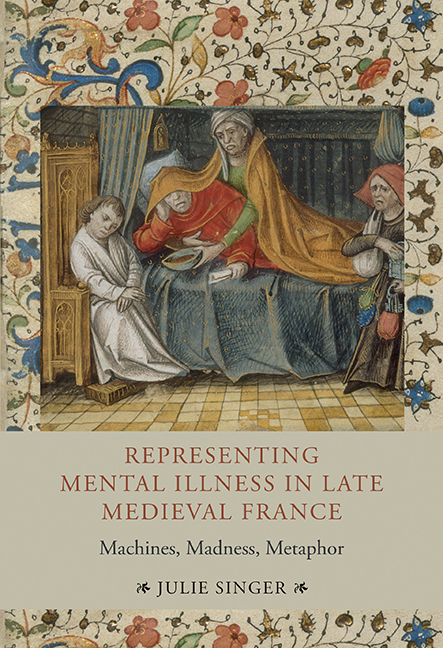Book contents
- Frontmatter
- Dedication
- Contents
- List of Illustrations
- Acknowledgements
- List of Abbreviations
- Introduction: Oxidation Before Oxygen
- 1 Of Metal and Men
- 2 Une enroullure de sapience: Instituting Princely Virtues at the Court of Charles V
- 3 Metaphors of the Body Politic
- 4 Le fer en la playe
- 5 Alain Chartier's rooil de oubliance
- Epilogue: Men Without Machines
- Bibliography
- Index
- Book part
Epilogue: Men Without Machines
Published online by Cambridge University Press: 15 October 2019
- Frontmatter
- Dedication
- Contents
- List of Illustrations
- Acknowledgements
- List of Abbreviations
- Introduction: Oxidation Before Oxygen
- 1 Of Metal and Men
- 2 Une enroullure de sapience: Instituting Princely Virtues at the Court of Charles V
- 3 Metaphors of the Body Politic
- 4 Le fer en la playe
- 5 Alain Chartier's rooil de oubliance
- Epilogue: Men Without Machines
- Bibliography
- Index
- Book part
Summary
What I hope to have shown in the preceding chapters is that the human mind is quite commonly figured in metallic or machine-like terms in later medieval French texts. Political engagement, in particular, requires the activation of these cognitive processes in the exercise of virtue. Delving deeper into these metaphors, and into the network of scientific, textual, and cultural allusions that they “map,” sheds light on the productive power as well as the political utility of metaphor in late medieval France. Such discourses long predate the reign of Charles VI, but the stakes of machine metaphors for cognitive function increase dramatically following the crisis of August 1392: questions of mental illness are thrust to the forefront of political discourse, even as the terms by which mental illness can be portrayed are increasingly circumscribed. At the end of Charles's reign, in response to the calamities of Agincourt and the Treaty of Troyes, Alain Chartier converts the image of a rusted engin from a model of princely cognition to a mental model of the poet himself. This rhetorical move is particularly suggestive of the creative power of scientific metaphor, its potential to remap both biological and poetic constructs of consciousness, memory, and intellect.
The examples cited thus far have brought us to the cusp of major political change: the coronation of Charles VII, and the turning of the tide of the Hundred Years’ War. Though the political landscape is vastly different in the mid- to late fifteenth century than it was a hundred years earlier, natural scientific knowledge remains similar to what it was in the time of Charles V; not surprisingly, rust and other inorganic metaphors continue to be deployed in political literature, such as in Jean Juvénal des Ursins's Verba mea auribus percipe, domine (1452) or Jean Meschinot's Lunettes des Princes (1461–65). But I do not claim, in the closing pages of this book, to trace the history of the rust metaphor further forward in time, nor do I seek to pin the rust metaphor's continued fortune to political circumstances, nor to developments in the history of science or technology.
- Type
- Chapter
- Information
- Representing Mental Illness in Late Medieval FranceMachines, Madness, Metaphor, pp. 291 - 312Publisher: Boydell & BrewerPrint publication year: 2018

